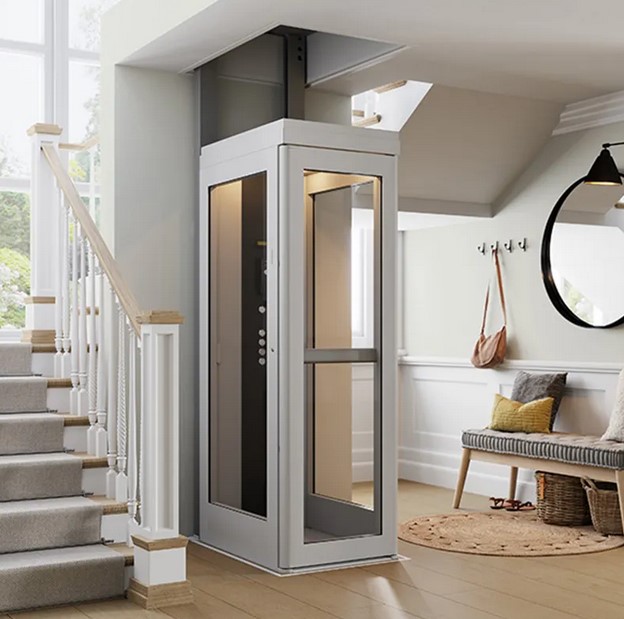London Lift Company: Offering Comprehensive Lift Solutions Throughout the Capital
London Lift Company: Offering Comprehensive Lift Solutions Throughout the Capital
Blog Article
Exploring the Globe of Elevators: Typical Concerns Encountered by Numerous Lift Mechanisms
As we browse via the upright transport systems of modern-day buildings, lifts stand out as a vital part of our day-to-day lives. From hydraulic lifts to traction systems and machine-room-less designs, each lift kind comes with its set of usual concerns.
Hydraulic Lifts
Hydraulic elevators, commonly preferred for low-rise structures, utilize fluid pressure to control the movement of the lift automobile (lift repair companies). This device entails a hydraulic pump pressing oil right into a cylinder, causing the elevator to move in the desired direction. While hydraulic lifts are known for their smooth and quiet procedure, they do come with their very own set of usual problems
One widespread trouble with hydraulic lifts is oil leak. The seals in the hydraulic system can break with time, causing oil infiltration. If left unaddressed, this not only develops a mess yet can also affect the elevator's efficiency. Additionally, concerns with the control system, such as malfunctioning valves or a malfunctioning pump, can create disruptions in the elevator's movement.
Normal upkeep and punctual repairs are important to make sure the smooth performance of hydraulic lifts. By attending to these common problems proactively, building proprietors can minimize downtime and make certain the safety and performance of their vertical transport system.
Traction Lifts
When thinking about upright transport systems in buildings, another usual kind other than hydraulic lifts is the traction elevator. Traction elevators run utilizing a system of ropes and weights that move the lift cars and truck by clutching onto the hoist ropes. This device permits smoother and quicker upright transport contrasted to hydraulic systems.
Among the common concerns dealt with by grip elevators is rope wear. The consistent motion of the ropes within the grip system can bring about deterioration over time, possibly causing the elevator to malfunction or come to be harmful for usage. Normal assessments and maintenance of the ropes are important to make sure the lift's correct functioning and safety and security.
One more concern that grip elevators might encounter is connected to the control system. Issues with the control system can cause concerns such as unpredictable motion, delays in feedback times, or perhaps complete shutdowns. Regular screening and maintenance of the control system are essential to stop such issues and ensure the lift's dependability.
Machine-Room-Less (MRL) Elevators

One of the key components of MRL elevators is the small gearless traction maker that is installed within the hoistway. This device efficiently drives the lift cars and truck without the demand for large devices found in conventional traction elevators. Additionally, MRL elevators generally utilize a weight system to balance the automobile, more improving their power effectiveness.
Regardless of their advantages, MRL elevators might deal with obstacles related to repair and maintenance because of the confined space for equipment installation. Accessibility for servicing parts within the shaft can be restricted, requiring specialized training for service technicians. Proper upkeep schedules and normal examinations are critical to make certain the ongoing smooth procedure of MRL lifts.
Overloading and Weight Limitation Issues
Are lifts outfitted to handle excess weight tons successfully and safely? Straining and weight restriction concerns are vital issues in elevator procedures. Elevator suppliers layout raises with specific weight discover this info here abilities to ensure passenger safety and equipment durability. Exceeding these weight limits can result in various issues, including mechanical failures, delays, and safety and security threats.
When elevators are strained, it places too much stress on the electric motor, cables, and other parts, potentially creating malfunctions or malfunctions. Security mechanisms such as sensors and overload sensors are in area to stop elevators from moving if they spot excess weight. Additionally, going beyond weight limitations can lead to increased power intake and wear and tear on the elevator system.
To minimize straining issues, building supervisors ought to prominently show weight restrictions in lifts and enlighten residents on the value of adhering to these restrictions - lift repair companies. Regular maintenance checks by qualified professionals can also help guarantee that lifts are running within risk-free useful source weight criteria. By addressing overloading and weight limit concerns proactively, structure owners can improve lift safety and security and efficiency
Electrical System Failings
Going beyond weight restrictions in lifts can not only bring about mechanical problems however also possibly add to electrical system failures within the lift infrastructure. Electrical system failings are a vital concern in elevator operation, as they can cause unexpected shutdowns, breakdowns, or perhaps safety hazards. One common electrical concern is the overheating of elements as a result of too much current circulation caused by overwhelming the elevator past its capacity. This can lead to damage to the motor, control, or electrical wiring systems, leading to expensive repair work and downtime.
Regular upkeep and inspections are vital to determine and address potential electric problems promptly, ensuring the efficient and secure procedure of lift systems. By sticking to weight limitations and performing routine electrical system checks, structure owners can minimize the risk of electrical failings in lifts.
Verdict

Hydraulic elevators, usually preferred for low-rise buildings, make go right here use of fluid pressure to control the movement of the lift car.When thinking about upright transportation systems in buildings, another typical kind apart from hydraulic elevators is the traction elevator. Traction lifts run using a system of ropes and weights that relocate the lift vehicle by grasping onto the hoist ropes. Unlike traditional lifts that need a separate equipment area to house the devices, MRL elevators integrate many of the components within the shaft, getting rid of the demand for a specialized device room.In conclusion, elevators face usual issues such as hydraulic malfunctions, grip system failures, and electric system troubles.
Report this page